Petit Island review
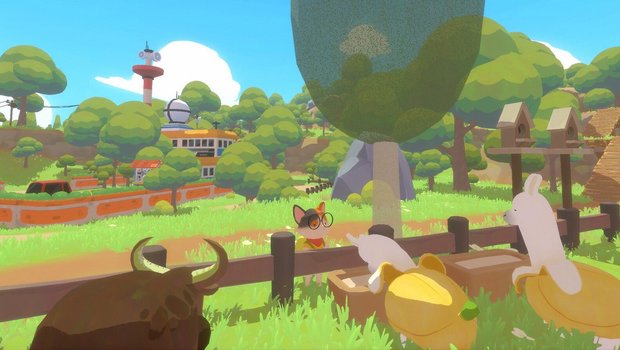
- 0 Comments
Cute anthropomorphic animal adventure has a charming emotional core but falls short of delivering a fleshed-out gameplay experience
I was interested in Petit Island because it is a narrative-oriented cozy game in an attractive setting, with an appealing protagonist and diverse gameplay – a game style I like a lot. But even just a bit into the experience, my basic reaction was: “meh.” It’s not that it’s a bad game; it’s just that many other games of the same basic kind are so much better that it’s really hard to recommend it. (Maybe if you have kids; it’s totally family friendly, which not everything is, and if they haven’t experienced Animal Crossing, Lake, Wilde Flowers, or the like, it will be fresh to them, and I can see it being a decent introduction to the form.)
The basic backstory is: You are an adolescent cat person named Lily, whose grandpaw (twee alert) had lovely experiences on Petit Island as a child but is now in early-stage Alzheimer’s (although they don’t use the term). You are visiting the island to explore his experiences and friendships with others, with a view to bringing mementos back to him and restoring his warm memories. And although many of the quests you embark on are only tangentially related to that goal, some are more directly so: encountering his old friends, finding the secret hideout he shared with them, unearthing a time capsule he left behind, and so on. This is touching in its way, but it’s not like there’s a strong narrative spine that holds all your actions together; it’s more like: quest-giver, here’s a quest, go do it, and sometimes it will touch on the overarching story.
The first thing you do is create your character’s appearance. You are always going to be a young, female cat person, but you have a choice of fur pattern, and top and bottom clothes for Lily. In general I approve of games that let you customize your appearance, both because it’s fun, and because it allows self-expression, in particular allowing more players to feel like they are represented. In this case, I choose to be a black cat – because my own kitty is black (not that I am, but hey). So I guess that’s self-expression in a way. After that, you are deposited at a terminal by a boat from the Big City, and have a fairly simple puzzle to solve to score a ferry pass and transition to Petit Island’s main town, where your first quests can be found.
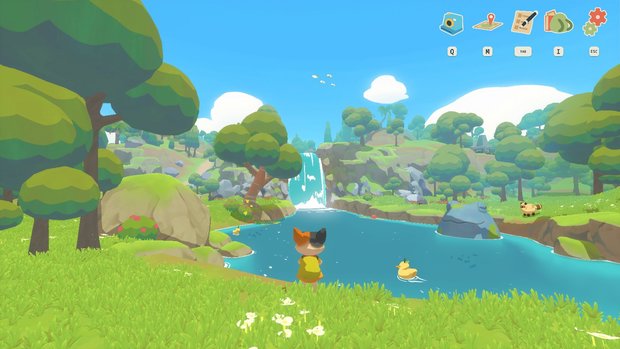
Petit Island is a third-person 3D game, playable either with a controller or mouse-and-keyboard; I played mostly with a controller, which generally works better with games where 3D navigation of space is essential, but I experimented with the alternate interface and it worked fine. Although an Unreal game, the graphics are pretty low-poly, but attractive in their own cartoon way: brightly colored, as is appropriate for a family friendly game, with models changing from region to region. The main town has the appearance of a Mediterranean village; while places like the fishing village, the mountain wilderness, and the Scout camp look quite different from one another. The island (as the name implies) isn’t enormous, but the terrain is variegated enough to be interesting when first encountered, although there is a lot of backtracking during play, so you become pretty familiar with the region.
The character models have just flat feet at the terminus of their legs, but I didn’t observe any awkward skating, so locomotion is fine for what it is. Oddly enough, there’s almost no animation among the flora (palm tree leaves do move a little), so the environment is unusually still. There are little critters who run away when you get too close (although your character can pat some), which does alleviate the otherwise static environment somewhat. Still, though the environment is pretty enough, it feels a bit dull.
The soundscape is decent; there’s no spoken dialog, but there’s ambient audio and the usual footsteps, varying by terrain and whether you’re on your mount or not. And there’s excellent music, provided by Samantha van der Sluis, who specializes in soundtracks for cozy games: it’s something like chamber music, symphonic in nature, but with only a few instruments per track. Many areas have their own score, but out in the wilderness, the music varies over time. To my mind, this is one of the best aspects of the game.
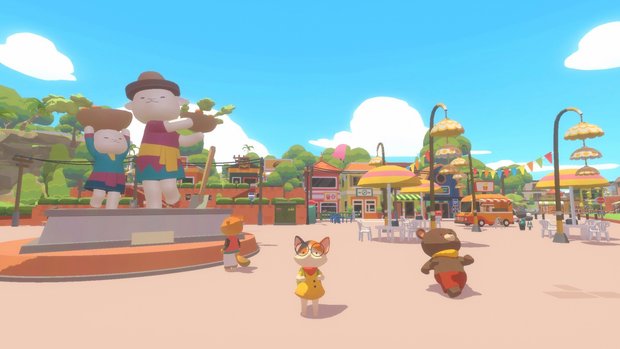
Gameplay is quest-driven, but the quests are diverse enough not to become too tedious. Some are fetch quests, for sure, but some are “go talk to that person and get another quest from them,” some are “go capture this number of fish/bugs of this type for me,” and some are “go find this thing that you need to perform some action to get to and do a thing there.” So yes, it’s mostly about running around and talking to characters you encounter, but there is a light platforming aspect to Petit Island, navigating to 3D spaces that aren’t trivial to reach. Yet this aspect of the game is not a big problem; since the game is scaled to kids’ expectations, even I (as an older non-digital native) was able to deal with it. So you needn’t fear if your platforming skillz are not l33t; if I can do it, so can you. And failing at a challenge isn’t death; it merely takes you back to the last save point to try again. Autosaves happen only on a quest completion, so this can set you back a bit, but you can save progress at any of the many payphones scattered about the map, so best practice is to save pretty often.
There is a bit of toing-and-froing across areas of the island. The in-game map is just a key press away, however, and you will look at it frequently to make sure you’re heading in the right direction. In addition to showing your location, it has a pointer to indicate where you’re currently facing, which is helpful if you get turned around. Eventually this backtracking does become somewhat tedious, partly because the center of the island consists of impassable high mountains, so “I have to get to this character” often means, bleh, so much terrain to traverse, and there’s no fast-travel option. There is also no sprint mode, though in chapter 2 you get a mount (a bananallama – basically a llama, wearing what looks like a suit made of banana peels – cute, mind you). Your mount lets you move faster, so that helps.
In the course of play, you gain four tools: a fishing rod, a net for catching bugs, a camera, and a shovel. Fishing and bug catching are required for some quests, but if you’re a completionist you can try to "catch 'em all." The problem, from my perspective, is that neither activity is very interesting. The fishing game is particularly dull (cast your rod, if there’s a nibble, hammer on a button). I actively like fishing in games, but this is about the least interesting implementation I’ve ever seen in a game. Bug catching is also a little boring; hold a key to sneak up, swoop your net, and bingo. Yes, the journal shows you what bugs and fish you’ve caught, with grayed-out images showing ones you haven’t, but the actual gameplay is dull.
Once you have a shovel, occasionally obvious places to dig appear; doing so earns you some coin. It’s possible to sell bugs and fish as well, although only if you (semi-randomly) encounter the relevant vendors as you’re never pointed to them. However, there’s virtually no reason to do so; money allows you to buy another mount (not any better than your first mount, but a different model) and furniture. But until the late game, you have no home space to furnish, and even then, establishing it is optional. You’re better off ignoring money altogether, since completing the main game narrative rarely requires it.
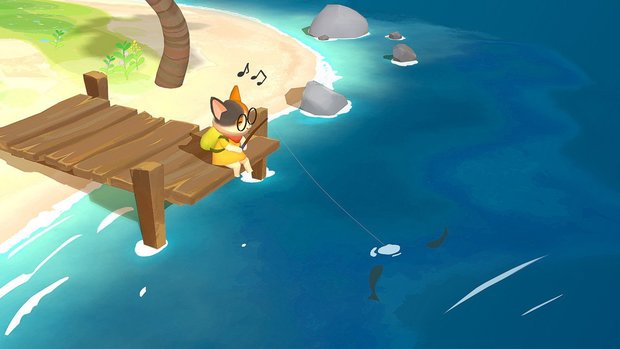
With one exception, all of the characters you meet are also anthropomorphic animals – mostly mammals, with the occasional bird-person. Almost everyone you interact with more than briefly is an adult, with the exception of Violet, a little rabbit girl, and the niece of “Mr. Joe,” the lighthouse keeper and an old crony of your grandpaw’s. She’s a bit of a brat, and serves as an antagonist for much of the game, but eventually you and she become friends. The one exception to the animal rule is “Mr. Giant,” some kind of island spirit, who guards your grandpaw’s old secret hideout, and whose quest sequence you must solve to get into it. Dialog is not branching; you may have options at times, but your choice does not affect outcomes. The unvoiced text dialog is okay with no errors, but the writing itself is nothing special.
After 10 chapters (which took me about 10 hours; probably less if you don’t wander off to make dinner while leaving the game open), there is a fairly emotional scene between Grandpaw and his old friends; but before then I was thinking, “why don’t I go play a better game?”
Adding to that feeling, I encountered two infelicities; one an actual bug, and one just an annoyance. The bug: There’s a side quest where a character tells you they’ve built a playground for their nephew, and asks you to try it out to see if it’s fun. Dialog does not allow you to decline once you’ve engaged with them. The “playground” is quite a complex platforming challenge, and after a few tries, I was done and uninterested in completing it. There is a gizmo on the ground that ostensibly lets you turn the challenge off, coming back later if you wish, but you cannot, in fact, turn it off. You can try to wander off to do something else, but will get zapped back to the challenge again, and the only way to get out of this nightmare is to quit and “continue” from your last save.
The annoyance: When you jump and run off an elevated feature, you can tap the jump button again to open an umbrella, allowing you to glide a substantial distance across a gap. However, this feature is not tutorialized until close to the end of the game – and before you get there, there is at least one quest that you can only accomplish by using the glide, despite the fact that the game hasn’t told you how to do so yet. An instance, perhaps, where the developers moved things around without anticipating the implications.
Another aspect that feels weird: There are little lacunae in the game suggesting the developers had ambitions for other features that never got implemented or fully implemented. The furniture thing is one instance, but similarly, at one point you pass through an area where there is a visible clothing shop. A character you speak to tells you how excited they are to buy new outfits – but you cannot, in fact, do so, with no option to buy new clothes or outfit them (or yourself). It feels like the developers ran out of time or money and abandoned systems that are entirely in keeping with this style of game, in order to focus on the essentials of gameplay they needed to deliver.
Which they did, as the main quests carry you through to an acceptable ending and the missing bits don’t leave you feeling unrequited. When given the chance to end the game and leave the island, you have the option to continue play before doing so. Even if you do depart, after the credit sequence you are deposited back at the ferry island “visiting Petit Island again,” and can continue from that point if you really want to get all the accomplishments and catch everything. So enthusiasts can explore the rest of the content if they want, even though the main story is over. I… was not motivated to do so.
Final Verdict
While Petit Island ultimately delivers on its promise of a cute anthropomorphic quest-driven cozy game, the static nature of its graphics, the apparent failure to deliver on certain features, and its dull implementation of activities like fishing and bug-snagging ultimately make it disappointing. Not that it’s horrible, just thoroughly mediocre by comparison to other games working in the same space. So, unless you totally adore this type of game, or think it would be a gentle introduction for your kids… it’s probably not the best use of your gaming time.
Hot take
While charming in delivering a somewhat heartwarming story, Petit Island is ultimately rather dull in its delivery, with boring implementations of activities like fishing and bug catching. In essence, it’s an uninspired effort in a familiar game style that others have done in much more interesting ways.
Pros
- Brightly lit and attractive vistas
- Upbeat whimsical vibe is family friendly
- Music is excellent
- Ultimately delivers a somewhat emotional story
Cons
- Visuals are quite static
- Implementation of key gameplay elements are dull and unchallenging
- Certain optional features not fully fleshed out
- At least one (non-game-stopping) bug and some awkwardness in tutorializing an essential game mechanic
Greg played Petit Island on PC using a review code provided by the game's publisher.


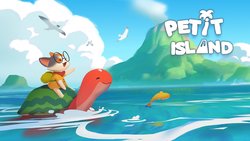
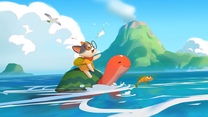

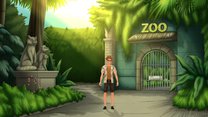


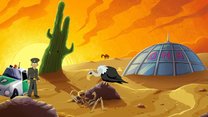

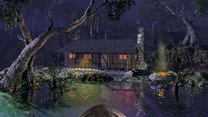
0 Comments
Want to join the discussion? Leave a comment as guest, sign in or register in our forums.
Leave a comment